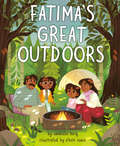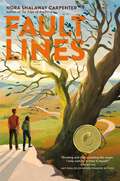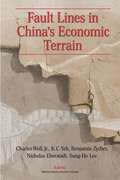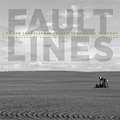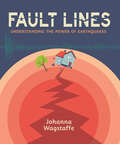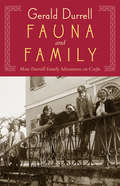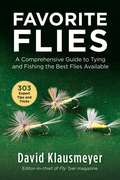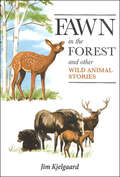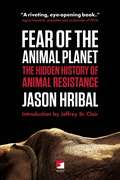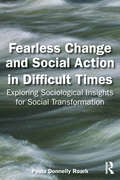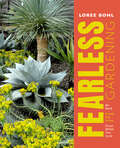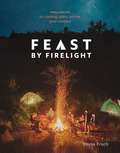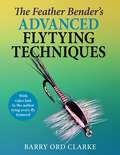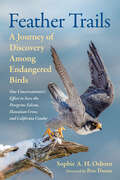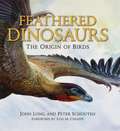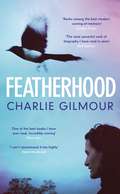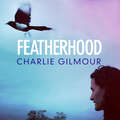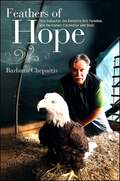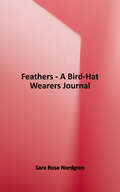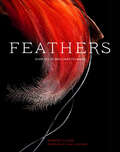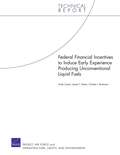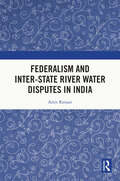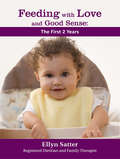- Table View
- List View
Fatima's Great Outdoors
by Ambreen TariqAn immigrant family embarks on their first camping trip in the Midwest in this lively picture book by Ambreen Tariq, outdoors activist and founder of @BrownPeopleCampingFatima Khazi is excited for the weekend. Her family is headed to a local state park for their first camping trip! The school week might not have gone as planned, but outdoors, Fatima can achieve anything. She sets up a tent with her father, builds a fire with her mother, and survives an eight-legged mutant spider (a daddy longlegs with an impressive shadow) with her sister. At the end of an adventurous day, the family snuggles inside one big tent, serenaded by the sounds of the forest. The thought of leaving the magic of the outdoors tugs at Fatima's heart, but her sister reminds her that they can keep the memory alive through stories--and they can always daydream about what their next camping trip will look like.Ambreen Tariq's picture book debut, with cheerful illustrations by Stevie Lewis, is a rollicking family adventure, a love letter to the outdoors, and a reminder that public land belongs to all of us.
Fault Lines
by Nora Shalaway CarpenterRiveting, powerful, and a little bit magical, Fault Lines offers readers a slow-burn romance alongside an unflinching examination of socio-economics, gender expectations, and environmental ethics. Ever since her aunt died four months ago, seventeen-year-old Vivian (Viv) Spry is aching to figure out where she belongs. Her father has become emotionally distant and even her best friend has found a new sense of identity in her theater group. Unfortunately, nobody in her rural West Virginia town has time for an assertive, angry girl, especially a girl dubbed &“Ice Queen&” for refusing to sleep with her popular boyfriend. On top of everything, she discovers a strange ability to sense energy that really freaks her out. The only place Viv feels like it&’s safe to be her true self is the tree stand where her aunt taught her to hunt. It's the one place she still feels connected to the person who knew her best. So when fracking destroys the stand and almost kills her, Viv vows to find a way to take the gas company down. When Dex Mathews comes to town—a new kid whose mom lands a job laying pipeline—his and Viv's worlds collide and a friendship (and maybe more?) slowly blossoms. But Viv&’s plan to sabotage the pipeline company could result in Dex&’s mom losing her job, putting them on the streets. Now Viv and Dex have to decide what&’s worth fighting for—their families, their principles, or each other.
Fault Lines in China's Economic Terrain
by K. C. Yeh Charles Jr. Wolf Nicholas Eberstadt Benjamin Zycher Sungho LeeThe authors consider how and by how much China's stellar economic performance might be impaired by eight potential adversities that China may face in the next decade: unemployment, poverty, and social unrest; corruption; HIV/AIDS and epidemic diseases; water resource problems and pollution; energy consumption and prices; the fragile financial system and state-owned enterprises; curtailed foreign direct investment; and serious military conflicts.
Fault Lines: Life and Landscape in Saskatchewan's Oil Economy
by Emily Eaton Valerie ZinkOil is not new to Saskatchewan. Many of the wells found on farmland across the province date back to the 1950s when the industry began to spread. But there is little doubt that the recent boom (2006–2014) and subsequent downturn in unconventional oil production has reshaped rural lives and landscapes. While many small towns were suffering from depopulation and decline, others reoriented themselves around a booming oil industry. In place of the abandoned houses and shuttered shops found in many small towns in Saskatchewan, housing developments sprang up with new trucks and boats parked in driveways. Yet people in oil-producing areas also lived amid flare stacks that made them ill, had trouble finding housing due to vacancy rates that were among the lowest in the country, suffered through family breakdown because of long working hours and time spent away from home, and endured spills and leaks that contaminated their land. In the summer of 2014, at the height of the boom, geographer Emily Eaton and photographer Valerie Zink travelled to oil towns across the province, from the sea-can motel built from shipping containers on the outskirts of Estevan to seismic testing sites on Thunderchild First Nation’s Sundance grounds.
Fault Lines: Understanding the Power of Earthquakes
by Johanna WagstaffeEarthquakes are a terrifying yet fascinating force of nature. Seismologist Johanna Wagstaffe takes you through her own journey of understanding the earth beneath our feet. Along the way you’ll learn the science behind what makes the earth rumble and hear from kids around the world who have experienced the wonder, and terror, of an earthquake.
Fauna and Family: More Durrell Family Adventures on Corfu
by Gerald DurrellThe inspiration for the PBS Masterpiece series, The Durrells in Corfu: A naturalist&’s childhood adventures with animals—and humans—on a Greek island. For a passionate animal lover like young Gerald Durrell, the island in the Ionian Sea was a natural paradise, teeming with strange birds and beasts. As he writes . . . &“To me, this blue kingdom was a treasure house of strange beasts which I longed to collect and observe, and at first it was frustrating for I could only peck along the shoreline like some forlorn seabird, capturing the small fry in the shallows and occasionally being tantalized by something mysterious and wonderful cast up on the shore. But then I got my boat, the good ship Bootle Bumtrinket, and so the whole of this kingdom was opened up for me, from the golden red castles of rock and their deep pools and underwater caves in the north to the long, glittering white sand dunes lying like snowdrifts in the south.&” The final entry in Durrell&’s Corfu Trilogy, Fauna and Family shows what life was like for a child in a different time and a different culture just before World War II. It also sheds light on the man who would one day become an iconic wildlife preservationist.Previously published as The Garden of the Gods&“[Durrell's] writing is nimble, witty and irreverent, warm but not remotely sentimental.&” —Los Angeles Times
Favorite Flies: A Comprehensive Guide to Tying and Fishing the Best Flies Available (Fly Tyer Ser.)
by David KlausmeyerFavorite Flies is the latest fly-tying manual from acclaimed writer and fisherman David Klausmeyer, in which his 303 best flies have been brought together for the ease of fly fishers everywhere. Whether you are a beginner seeking a comprehensive tying guide or an experienced tier yearning for detailed information on the most successful flies, this book has it all. Each fly featured comes with a complete recipe, step-by-step tying instructions, and specialized fishing tactics. Included within this tier-friendly manual are detailed text blocks that carefully describe each tying step for each featured fly. Supported with a materials recipe for each fly, the many images of the tools, materials, and flies make it easy to understand and tie even the most complex flies. With this guidebook, you&’ll learn to master the classic patterns, as well as hot, new innovative ones. Fly tying is not only a craft, but an art form. In Favorite Flies, Klausmeyer will help you excel at both. Avid sport flyfishermen will treasure this book and gain even more in-depth knowledge.
Fawn Island
by Douglas WoodFawn Island is a place where crows serve as alarm clocks, white-throated sparrows leave the tracks of their songs upon the evening hush, and chickadees help a woodsman learn to whistle. The island is also a jumping-off place for journeys large and small, earthly and spiritual-to nearby Mallard Island, Gull Island, or Bald Rock, by sea kayak into the wild recesses of sprawling Voyageurs National Park, or on a midnight paddle in which the paddler can reach the silent wilderness of the stars themselves. In his latest book, best-selling author Douglas Wood guides the reader on a deep journey into the heart of the North Woods.For Wood, Fawn Island is not merely a charming wilderness hideaway; it is the entry to realms of thought and meaning as well. From its pine-clad shores he probes for insights into the nature of neighborliness and independence, of community and solitude. Out of an ancient Ojibwe legend comes an exploration of personal loss and life after death. Wood questions the notion of being a &“force of nature&” and the concept of the passage of time in the context of seemingly eternal trees, lakes, rock ledges, and stars. From beneath the ascending trunks of pines comes an inquiry into the principles of optimism and, finally, a personal response to the eternal question: Is the universe a friendly place?Embedded in the text like roots of the island&’s pines is Wood&’s gentle, self-effacing humor and the author&’s own original pen-and-ink drawings that superbly evoke the poetry and mystery of this &“small bit of rock and tree,&” this &“lucky place&” in the wilderness.
Fawn in the Forest: And Other Wild Animal Stories
by Jim KjelgaardHere is a wonderful invitation to visit the forest and see just how the wild animals there live, through the skill of a fine author who wrote from his own close, understanding observation. You will sympathize with the mother coyote that escaped from a zoo and carried her pup for miles back to her home den; hold your breath while a kitten attacks a rattlesnake; meet a frost-coat rabbit that almost liked clover too well and a kingfisher that helped a bear; discover how a quintet of oddly-assorted animals outran a blizzard; and, charmed, watch a fawn grow up and a friendless squirrel find a home.
Fear of the Animal Planet
by Jason Hribal Jeffery St. ClairTaking the reader deep inside of the circus, the zoo, and similar operations, Fear of the Animal Planet provides a window into animal behavior: chimpanzees escape, elephants attack, orcas demand more food, and tigers refuse to perform. Indeed, these animals are rebelling with intent and purpose. They become true heroes and our understanding of them will never be the same.
Fearless Change and Social Action in Difficult Times: Exploring Sociological Insights for Social Transformation
by Paula Donnelly RoarkOur divided politics, unable to solve the challenges we face concerning society’s hierarchies of injustice, poverty, endless war, and climate change, are now backtracking to even more division. But the reality goes far deeper than the simple politics of left and right. For true change, we need something more profound: a culture shift, a collective change of consciousness.Fearless Change and Social Action in Difficult Times argues that culture shifts don’t just happen, they require a strong focus on social and cultural human connection which neither political nor economic power can provide alone. It is only deep participation and social integrative power which have the capacity to create these necessary cultural and societal transformations. Developing awareness in participatory groups of thought-worlds which remain out-of-sight but give cover to the implicit rules of culture and society is the first step to creating shared awareness of constructs and negative thought-worlds that subconsciously support inequality. Consciously putting aside those that are negative allows for the emergence of new positive realities and social movements. Thus, the real revolution is of the mind. It does take courage, but this is the process by which better futures are created.Offering significant contributions to sociology and social theory, this book promotes an understanding that societal change is rooted in social power and cultural shifts. Inclusive in its presentation, students, professors, NGO professionals, volunteers, activists, and interested observers will find this book of high interest.
Fearless Gardening: Be Bold, Break the Rules, and Grow What You Love
by Loree Bohl&“Fearless Gardening encourages you—exhorts you—to boldly go forth and claim your garden as a space of joy and creativity.&” —Jennifer Jewell, creator and host of public radio&’s Cultivating Place Embrace your inner rebel and create the garden you want—even if it breaks the rules. Loree Bohl, the voice behind the popular blog the danger garden, shows how it&’s done in Fearless Gardening, with zone-busting ideas and success stories. Bohl&’s own gorgeous home garden inspires, with agaves that shrug off ice storms, palms that thrive in the rain, and planting risks that are beautifully rewarded.
Feast Your Eyes
by Brittany Wright"The year's most satisfying new book." - GrubStreetArtist Brittany Wright was stuck in a job she didn't love and needed a new creative project to stay happy--so she learned to cook. Inspired by the effortless beauty of her ingredients--fresh fruits, vegetables, and more--she created the hugely popular Instagram hashtag #foodgradients to showcase the splendor of nature's edible rainbows. The vivid photographs in this book capture the diversity and beauty of the foods we love to eat, from heirloom tomatoes and hot peppers to ripe strawberries and frosted cupcakes. Inside, revel in the vivid neons of your favorite candies, the rich color of freshly picked greens, and the gorgeous shades you can even find in a single cup of coffee. Each exquisite, neatly ordered photograph is a pleasure to get lost in. With a sleek, minimalist design and more than a hundred high-quality photographs, Feast Your Eyes is a celebration of the earth's bounty, a breath of fresh air for the busy mind, and an inspiration for everyone looking for joy in the simple things.
Feast by Firelight: Simple Recipes for Camping, Cabins, and the Great Outdoors
by Emma FrischA transporting, lushly photographed book with easy-to-prepare recipes for gatherings at campgrounds and cabins alike. Feast by Firelight offers solution-oriented recipes that make cooking outdoors feel effortless and downright fun and it shows how to utilize clever cooking methods, prep food at home, and pack smart. The book includes recipes for camp cooking as well as detailed menus, shopping and equipment lists, and tips showing how to prepare before you leave. Featuring 70 accessible recipes, it is the first of its kind in the outdoor-cooking niche to pair useful information with evocative photography of finished dishes and useful illustrations (such as how to pack a cooler and how to build a fire), setting a new standard for camping cookbooks.
Feather Bender's Advanced Flytying Techniques
by Barry Ord ClarkeFollowing the success of his ground-breaking first book in this series, Barry Ord Clarke (recently voted Flytyer of the World) is sharing his latest innovations in this publication. As with his first book, each step-by-step photographic tying sequence is linked to the online video of him tying each of the flies featured. This gives flytyers the best of both worlds. They can work carefully at their own pace using the book, while the QR code next to each sequence takes them straight to the optional video which gives the overall visual tying lesson. Flies included are: The Ubiquitous Nymph, Danica Mayfly Nymph,Moose Mane Nymph, Clarke&’s All Purpose Emerger, Midge Emerger, Emergent Sparkle Pupa, Hares ear soft Hackle, All Fur Wet Fly, Hares Ear Parachute, Anorexic Mayfly, CDC Mayfly Dun, Mallard Slip Wings, Compara Dun, Clarke&’s Caddis, Diving Caddis, Dyret, Welshman&’s Button, Fluttering caddis, Red Panama, Giant Stonefly, Braided Blue Damsel, The Worm, Float Foam Ant, Madam X, Foam Cylinder Cranefly, Phantom Zonker, Gummi Grub, Silicone Fry.
Feather Trails: A Journey of Discovery Among Endangered Birds
by Sophie A. OsbornNamed ABA Birding Book Club&’s Best Book of the Year&“[This book] deserves to be read widely, because it is only in coming to understand these animals, suggests Osborn, that we can choose to love and help them.&”—New ScientistThe story of one woman&’s remarkable work with a trio of charismatic, endangered bird species—and her discoveries about the devastating threats that imperil them.In Feather Trails, wildlife biologist and birder Sophie A. H. Osborn reveals how the harmful environmental choices we&’ve made—including pesticide use, the introduction of invasive species, lead poisoning, and habitat destruction—have decimated Peregrine Falcons, Hawaiian Crows, and California Condors.In the Rocky Mountains, the cloud forests of Hawai&’i, and the Grand Canyon, Sophie and her colleagues work day-to-day to try to reintroduce these birds to the wild, even when it seems that the odds are steeply stacked against their survival.With humor and suspense, Feather Trails introduces us to the fascinating behaviors and unique personalities of Sophie&’s avian charges and shows that what endangers them ultimately threatens all life on our planet.More than a deeply researched environmental investigation, Feather Trails is also a personal journey and human story, in which Sophie overcomes her own obstacles—among them heat exhaustion, poachers, rattlesnakes, and chauvinism.Ultimately, Feather Trails is an inspiring, poignant narrative about endangered birds and how our choices can help to ensure a future not only for the rarest species, but for us too.&“An intimate look at the wonder and effort needed for working with endangered species in the wild. [Osborn&’s] matter-of-fact writing style and wry humor make the reader part of the action.&”—Booklist (starred review)
Feathered Dinosaurs: The Origin of Birds
by John A. Long Peter SchoutenScientists have recovered more than a billion fossils, but no discovery has been more breath-taking than the fossils recently found in northern China, findings which prove that several families of dinosaurs had feathers, or feathery hair-like coverings, adorning their bodies. Now in the beautifully designed Feathered Dinosaurs, paleontologist John Long and illustrator Peter Schouten provide a stunning visual record of these extraordinary prehistoric creatures, illuminating the evolutionary march from primitive, feathered dinosaurs through to the first true flying birds. Schouten, an acclaimed natural history artist, has created 80 full-color paintings that capture the striking physical traits of these feathered dinosaurs. Drawing on his extensive knowledge of the lifestyles of modern birds and mammals, plus the extant scientific data regarding how these dinosaurs might have looked and behaved, Schouten has produced not only the most beautiful but also the most accurate visual representations of these animals in print. Equally important, John Long, a noted paleontologist and widely published science author (with some 24 books to his credit), provides an engaging companion text that places these feathered dinosaurs within the larger family of dinosaurs--for instance, outlining their relationship to T. Rex and Velociraptor, species well known to Jurassic Park fans--and discusses the factual information that can be deduced from their fossil remains, in effect providing an insightful natural history of this remarkable group. A true marriage of art and science, Feathered Dinosaurs presents an unprecedented visual record of one of the most significant breakthroughs in the history of vertebrate paleontology--the discovery that many predatory dinosaurs were cloaked with feathers, perhaps just as colorful and fanciful as those of their living relatives.
Featherhood: 'The best piece of nature writing since H is for Hawk, and the most powerful work of biography I have read in years' Neil Gaiman
by Charlie Gilmour'One of the best books I have ever read. Incredibly moving' Elton John'I cant recommend it too highly' Helen Macdonald'Ranks among the best modern coming-of-age memoirs' Sunday Times'Where Helen Macdonald's H Is For Hawk meets Gerald Durrell's My Family And Other Animals ... Remarkable' Daily Mail'Beautiful, wise, compassionate and powerful' Isabella TreeThis is a story about birds and fathers.About the young magpie that fell from its nest in a Bermondsey junkyard into Charlie Gilmour's life - and swiftly changed it. Demanding worms around the clock, riffling through his wallet, sharing his baths and roosting in his hair... About the jackdaw kept at a Cornish stately home by Heathcote Williams, anarchist, poet, magician, stealer of Christmas, and Charlie's biological father who vanished from his life in the dead of night.It is a story about repetition across generations and birds that run in the blood; about a terror of repeating the sins of the father and a desire to build a nest of one's own. It is a story about change - from wild to tame; from sanity to madness; from life to death to birth; from freedom to captivity and back again, via an insane asylum, a prison and a magpie's nest.And ultimately, it is the story of a love affair between a man and a magpie. 'An incisive, funny and at times traumatic study of the damage done by destructive father-son relationships and the struggle to smash generational cycles' Evening Standard'A personal reckoning which is simultaneously brutal and joyous. I was entranced' Cathy Rentzenbrink'A beautiful book - it made me cry' Simon Amstell
Featherhood: 'The best piece of nature writing since H is for Hawk, and the most powerful work of biography I have read in years' Neil Gaiman
by Charlie Gilmour'One of the best books I have ever read. Incredibly moving' Elton John'I cant recommend it too highly' Helen Macdonald'Ranks among the best modern coming-of-age memoirs' Sunday Times'Where Helen Macdonald's H Is For Hawk meets Gerald Durrell's My Family And Other Animals ... Remarkable' Daily Mail'Beautiful, wise, compassionate and powerful' Isabella TreeThis is a story about birds and fathers.About the young magpie that fell from its nest in a Bermondsey junkyard into Charlie Gilmour's life - and swiftly changed it. Demanding worms around the clock, riffling through his wallet, sharing his baths and roosting in his hair... About the jackdaw kept at a Cornish stately home by Heathcote Williams, anarchist, poet, magician, stealer of Christmas, and Charlie's biological father who vanished from his life in the dead of night.It is a story about repetition across generations and birds that run in the blood; about a terror of repeating the sins of the father and a desire to build a nest of one's own. It is a story about change - from wild to tame; from sanity to madness; from life to death to birth; from freedom to captivity and back again, via an insane asylum, a prison and a magpie's nest.And ultimately, it is the story of a love affair between a man and a magpie. 'An incisive, funny and at times traumatic study of the damage done by destructive father-son relationships and the struggle to smash generational cycles' Evening Standard'A personal reckoning which is simultaneously brutal and joyous. I was entranced' Cathy Rentzenbrink'A beautiful book - it made me cry' Simon Amstell
Feathers of Hope: Pete Dubacher, the Berkshire Bird Paradise, and the Human Connection with Birds (Excelsior Editions)
by Barbara ChepaitisFeathers of Hope takes the reader on a joyful journey through the Berkshire Bird Paradise in Grafton, New York. Founded and maintained by Pete Dubacher, the Berkshire Bird Paradise is a magical place that provides sanctuary to over twelve hundred injured or otherwise unreleasable birds, from emus, pigeons, and tropical birds to eagles, owls, hawks, and more. New York City residents regularly drive four hours to hand-deliver injured pigeons to Pete, and wildlife officials across the country have sent injured birds for his care, from an eagle mauled by a bear in Alaska to cranes left over from a breeding program in Maryland. In April 1999, two baby golden eagles were hatched from two disabled birds, and the surviving eaglet, Dotty, was successfully released into the wild, and in 2003 two bald eagles were, for the first time ever, hatched in captivity, raised, and released.Following Pete for a "typical" day at the sanctuary, which includes tossing dead rats to eagles and stoking woodstoves at one in the morning, author Barbara Chepaitis provides an intimate view of what it takes to maintain a dream of this proportion, and what makes Pete Dubacher the kind of man who can do so. Along the way, she also tells the stories of other people in many different walks of life who have found solace in and taken inspiration from their interactions with birds, including a college student who takes an injured baby bird to her critical theory class, avid birdwatchers who keep careful lists of all the birds they've seen, and a man who found meaning by rescuing injured pigeons in New York City. Together with Pete's story and the story of the Berkshire Bird Paradise, their stories offer an engaging look at how forging a stronger connection to birds, and to nature in general, can teach us to be more fully human. Birds of Paradise is for anyone who ever rescued a baby bird or wondered how to make a dream come true.
Feathers: A Bird-Hat Wearer’s Journal
by Sara Rose NordgrenDesigned as a turn-of-the-century women's magazine that combines memoir, history, theory, poetry, and image, this book explores women's complex relationship with birds through the history of feather fashion. Originating in the bird-hat controversy of the late 19th and early 20th centuries, which coincided with both the women's suffrage and budding American conservation movements, this polyvocal book moves in multiple directions as it examines cases of women and birds from across cultures and time periods, from the Virgin Mary, to Leda, Swan Lake, and Alexander McQueen. As its connective thread, Feathers also follows one woman's enculturation into the world of bird women and its inherent violence.
Feathers: Displays of Brilliant Plumage
by Robert ClarkThe award-winning National Geographic photographer captures the stunning variety and mystery of bird feathers in this acclaimed monograph.Robert Clark’s fascinating and brilliantly colorful images reveal the beauty and myriad functions of a seemingly simple thing: the bird feather. Each exquisitely detailed close-up is paired with informative text about the utility and evolution of the feather it depicts, making this handsome marriage of art and science the ideal gift for bird lovers, natural history buffs, and photography enthusiasts.“Art meets science in a poetic celebration of Earth’s astonishing diversity. Feathers is an intensely beautiful visual taxonomy and a photographic love letter to this poetic feat of evolution.” —Brain Pickings
Federal Financial Incentives to Induce Early Experience Producing Unconventional Liquid Fuels
by Frank Camm James T. Bartis Vi-Nhuan Le Charles J. BushmanThe government, as a principal, may seek to induce a private investor, as anagent, to build and operate an unconventional-oil production plant topromote early production experience with such plants. Facing significantuncertainty about the future, it also wants to limit the cost to the publicof doing this. This report offers an analytic way to design and assesspackages of policy instruments that the government can use to achieve itsgoal.
Federalism and Inter-State River Water Disputes in India
by Amit RanjanThis book examines the Union-State and inter-State relations concerning water issues in India. It analyses the federal structure in India and looks at its effectiveness in addressing the inter-state river water disputes in the country through three cases: the Cauvery, Krishna and Mahadayi Rivers water dispute. It probes into the physical, political, legal and constitutional measures taken by the Union government and the states to deal with the inter-State and Union-State tussles over inter-State river waters. The author studies the debate over centralisation and decentralisation of water resources, as well as the inter-state river water disputes that have aroused feelings of sub-nationalism in many regions of India. Finally, this book also examines socio-political tensions over multipurpose water projects and other supply-side infrastructures, and their efficacy in addressing India’s increasing water problems. This book will interest researchers and students of Environmental Politics, Political Science, Public Policy, Environmental Geography, Indian Politics, South Asian Studies, Environmental Economics, Environmental Policy, River Management, and Resource politics.
Feeding With Love and Good Sense: The First 2 Years
by Ellyn SatterA good feeding relationship with your child starts at day one and makes all the difference between joy or struggle in feeding. This brief, beautiful, compact, engaging booklet gets today’s busy parents off to a good and authoritative start with feeding. Full of Satter's pithy advice and real-life feeding stories. Gives a concise behavioral and nutritional guide to feeding children, emphasizing what to do in words and pictures, and demonstrating why to do it with feeding stories. The emphasis is on tuning in on, understanding, and feeding children in a stage-appropriate way. Sixth grade reading level. - See more at: http://www.ellynsatterinstitute.org/store/index.php?route=product/product&product_id=79#sthash.xaHQnUtu.dpuf
